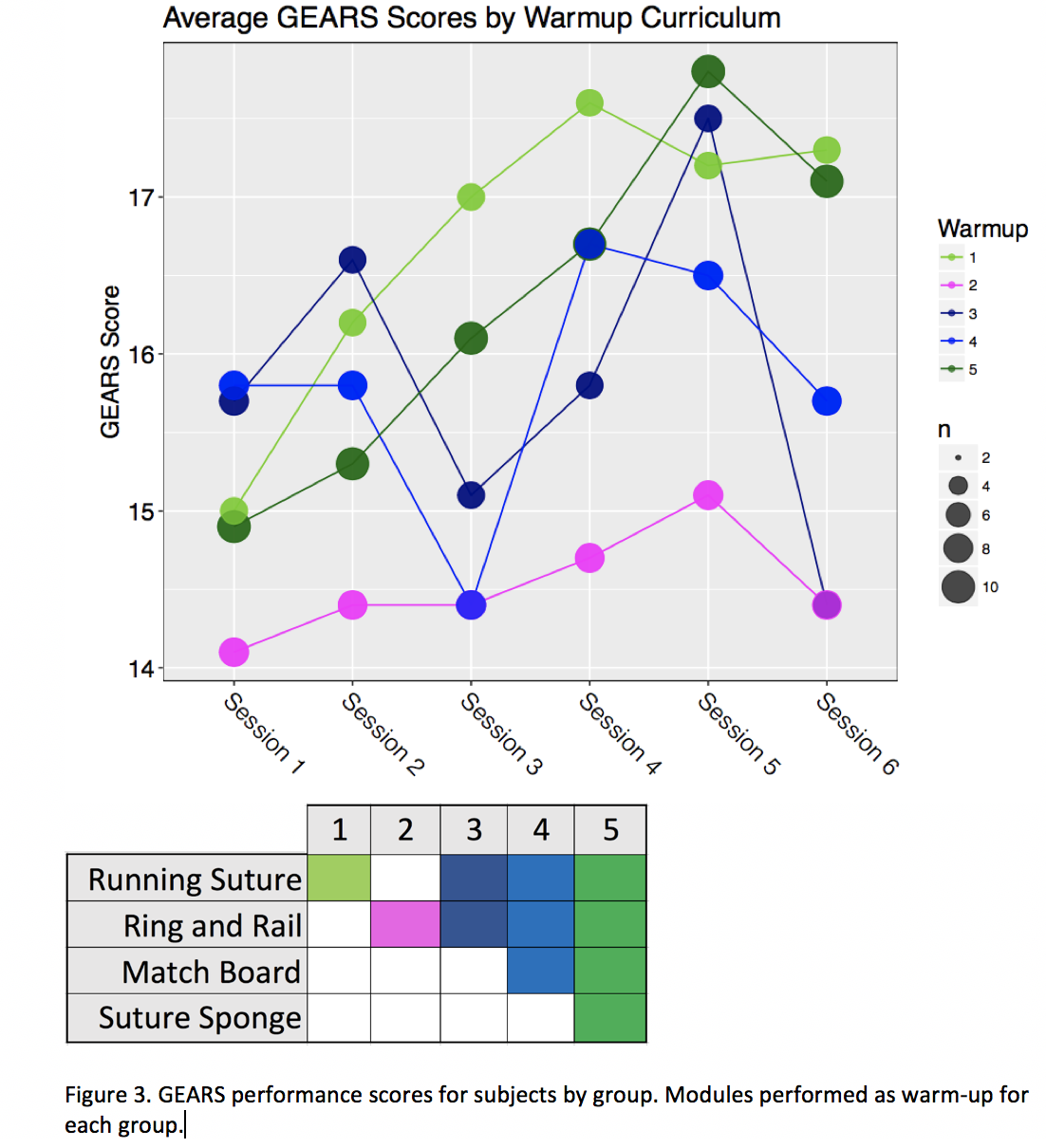Robotic Surgery Readiness: What is the Optimal Warm-up for Robotic Skills?
Thomas S. Lendvay, MD, FACS1, Timothy Brand, MD2, Anna French, PhD3, Lois Meryman, BS4, Nancy Organ, MS4, Mathew Sorensen, MD, MS5, Jason Kelly, BS3, Evalyn George, BS6, Timothy Kowalewski, PhD3.
1Seattle Children's Hospital, Seattle, WA, USA, 2Madigan Army Medical Center, Tacoma, WA, USA, 3University of Minnesota, Minneapolis, MN, USA, 4University of Washington, Seattle, WA, USA, 5Puget Sound Veteran Affairs Medical Center, Seattle, WA, USA, 6Madigan Army Medical Center, Henry M. Jackson Foundation, Tacoma, WA, USA.
BACKGROUND: A surgeon’s technical performance directly impacts patient outcomes. Virtual Reality(VR) warm-up, mental rehearsal, and patient/procedure-specific practice may improve surgeon performance. Yet, there is minimal literature on the optimal warm-up for robotic surgery practice. We sought to identify the optimal virtual reality curriculum that would prime (warmed-up) practicing surgeons prior to doing a VR criterion suturing task on the da Vinci Skills Simulator(dVSS). This curriculum will then be used to prime surgeons prior to performing clinical robotic surgery.
METHODS: After IRB approval, surgical trainees and faculty from urology, general surgery, gynecology, and otolaryngology at three medical centers completed the study. Upon recruitment, each subject went through proficiency training on VR skills modules exercising different techniques (suturing, use of the fourth arm, object transfer, retraction). Proficiency benchmarks were derived from two expert robotic surgeons performing these modules. Once proficient, each subject was randomized to one of 5 groups to test which series of warm-up modules optimally prime the surgeon[Figure1]. Each subject performed six trial sessions. Criterion performance metrics included Task Time(TT) and expert video review using Global Evaluative Assessment of Robotic Skills(GEARS), a validated technical skills assessment tool. The randomization group yielding the highest GEARS scoring and best TT dictated the optimal warm-up curriculum.
RESULTS: Forty-four subjects completed the study. Based on TT and GEARS scores, there were two groups(1 and 5) who demonstrated optimal performance priming - one that included Continuous Suturing, Ring and Rail, Match Board, and Suture Sponge modules and one that only contained the Continuous Suturing module[Figure2]. Compared to Group 2 which had the worst performance, Group 1 subjects had a higher GEARS score(2.1 points higher +/- 0.86, p = 0.02)[Figure3]. Compared to Group 2 which had the slowest TT, Group 1 was on average 31.3 seconds faster (+/- 14.02 seconds, p = 0.03)[Figure4]. GEARS scores(p = 0.47) and TT(p = 0.70) from Groups 1 and 5 were not significantly different from each other. Group 1 had the least variation(SD) in GEARS scores and TT of all groups, thus was chosen as the optimal VR warm-up.
CONCLUSIONS: This study identified an optimal warm-up curriculum to prime surgeons for VR suturing using the dVSS. We demonstrated that GEARS scores cross-validated with TT. This optimal VR warm-up curriculum can now be deployed into the operating room to test the hypothesis that VR robotic warm-up can prime surgeons for performing clinical robotic surgery. Funded by DoD TATRC Award#W81XWH-15-2-0300(PI:Lendvay) 



Back to 2018 Program




